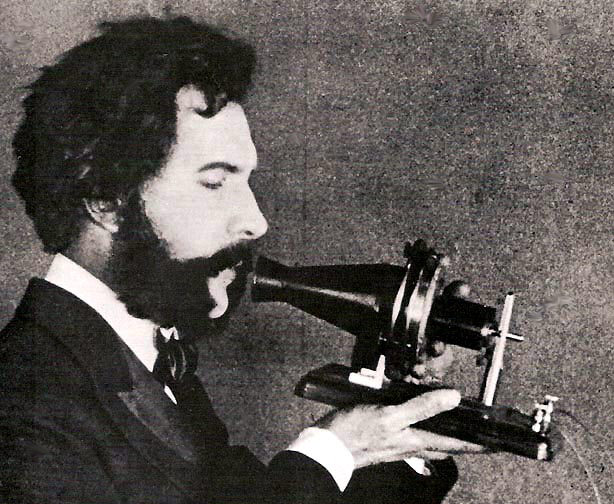

As early as 1831, Michael Faraday proved that vibrations of metal could be converted into electrical impulses. This was the basic principle of the telephone, but no one made use of such technology until 1861, when German inventor, Johann Reis, successfully built an apparatus that converted sound to electricity and back again. The apparatus had many flaws, incapable of transmitting many frequencies and therefore was never fully developed.
This idea was elaborated on by two men in the United States, who simultaneously began experimenting and creating what would be known as the telephone. Elisha Gray and Alexander Graham Bell (a Scottish inventor), both worked hard to produce the equipment, and amazingly both filed for a patent within hours of one another, Bell beating his rival by merely two hours on February 14th, 1876.
Despite Gray building the initial diaphragm / electromagnetic receiver two years prior, he was unable to produce a working version of his transmitter until after Bell. Bell worked effortlessly, whereas Gray became disheartened by the exhausting invention process.
The first comprehensible telephone conversation was said to have taken place between Bell and his assistant, who was sitting in another room. Bell said, "Come here, Watson, I want you" which Watson successfully heard via the receiver and the invention of the telephone was complete. The Bell Telephone Company (AT&T) was soon established and grew to be the largest telephone company in existence.
The following year, in 1877, the first telephone system was put in place in Hartford, Connecticut, whilst the first exchange which linked two cities, was established between both Boston and New York in 1883. London hosted the first exchange put into practice outside the United States in 1879. The system however proved time consuming, as the exchange was controlled by a large switchboard with a number of operators working manually to divert the calls.
The first automatic exchange was patented by Almon Strowger in 1891 and instilled in 1892, although manual switchboards remained in place until the mid-twentieth century. In 1889, William Gray invented the coin operated telephone, whereas the first rotary dial telephone was produced by Frenchman, Antoine Barnay, in 1923.
The Bell Telephone Company later developed the mobile telephone which was used by New York police cars in 1924. The first commercial mobile service was created in 1946, in St Louis, Missouri but it did not become commonplace until a following four decades.
Touch tone systems, which used sound tones rather than electrical pulses, were installed in 1941, however the need for central switching made the idea too expensive, yet Bell's company were curious as to the potential of touch tone employment. As electrical circuitry prices fell, the touch tone systems could finally be deployed in common households, which occurred in 1962.
AT&T began experimentation with cells within mobile technology, primarily based on hexagonal geographical regions. As the caller moved from one cell to another, the communication link would remain intact, by automatically switching to the new cell without any form of disruption. This foundation for mobile phone technology was put into place in the United States in 1983.
The invention of the telephone is a hot topic within the inventor circle, and the recognised inventor is somewhat sketchy. Many believe it to be Alexander Graham Bell, whereas others believe it to be Antonio Meucci, Philip Reis or Elisha Gray.
No comments:
Post a Comment